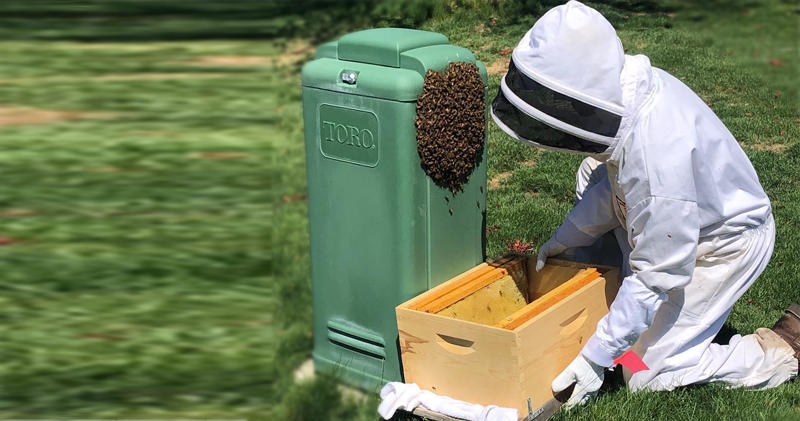It was another excellent morning in Boise, a bit cool and windy but the sun was out. My golf partner, lets call him Frack, and I were walking the front nine at our golf course. On the sixth hole, a longish par five, my ball came to rest about 100 yards from the green and close to one of the green irrigation control boxes. It appeared that the top third of the box was a mass of yellowish creatures and they were moving. We have all heard about the dreaded murder hornets and live with the yellow jackets and wasps indigenous to our area. These creatures were buzzing as they protected their Queen. Our excellent greens superintendent had circled the area and put up a sign that indicated ground under repair. Frack joined me and we determined they were honey bees and both hoped no one would harm them. We saw the greens superintendent a few holes later and he explained the situation. He was looking for someone to come and move the swarm. He had done his research and knew that the colony had outgrown its hive or it was spoiled and they were on their way to a new home. The Queen is surrounded by the bees to protect her and they send scouts out to find a new location. Within a few days they would find a new home. No one was comfortable that the bees would we safe for that uncertain time in such a high traffic location.
So what are the alternatives? Our long time neighbor and friend in the foothills is a bee keeper. Hutch understands and appreciates our flying friends. We called Ms. Hutch, who was traveling but the distance did not slow down her proactive response. She immediately called her son, who takes after his father and he donned his gear and came to capture and move the Queen and her court to a new hive. The bees are safe and will continue their important work in our ecosystem. It was refreshing to see the level of concern and effort to protect our prolific pollinators and honey producers.
Honey bees are among the most numerous and efficient pollinator species in the world. The average honey bee can visit 2000 flowers in one day, they greatly improve the chance a plant will produce a fruit or vegetable. Honey bees pollinate over 100 crops in North America and contribute billions to the U. S. economy every year. Perhaps as important the bees pollinate wild and native plants, a major contribution to the health and beauty of our environment. We must pay attention as the honey bee population is in rapid decline, from over 6 million colonies in the late 1940’s to less than 2.5 million today. Wild bees are also in decline. Like the focus on climate change to slow global warming and protect our planet, it is in the best interests of our ecosystem to protect every living creature.
Bee smart and get vaccinated and thank you for continuing to wear a mask for the good of our community.
Enjoy the week end. Mike

